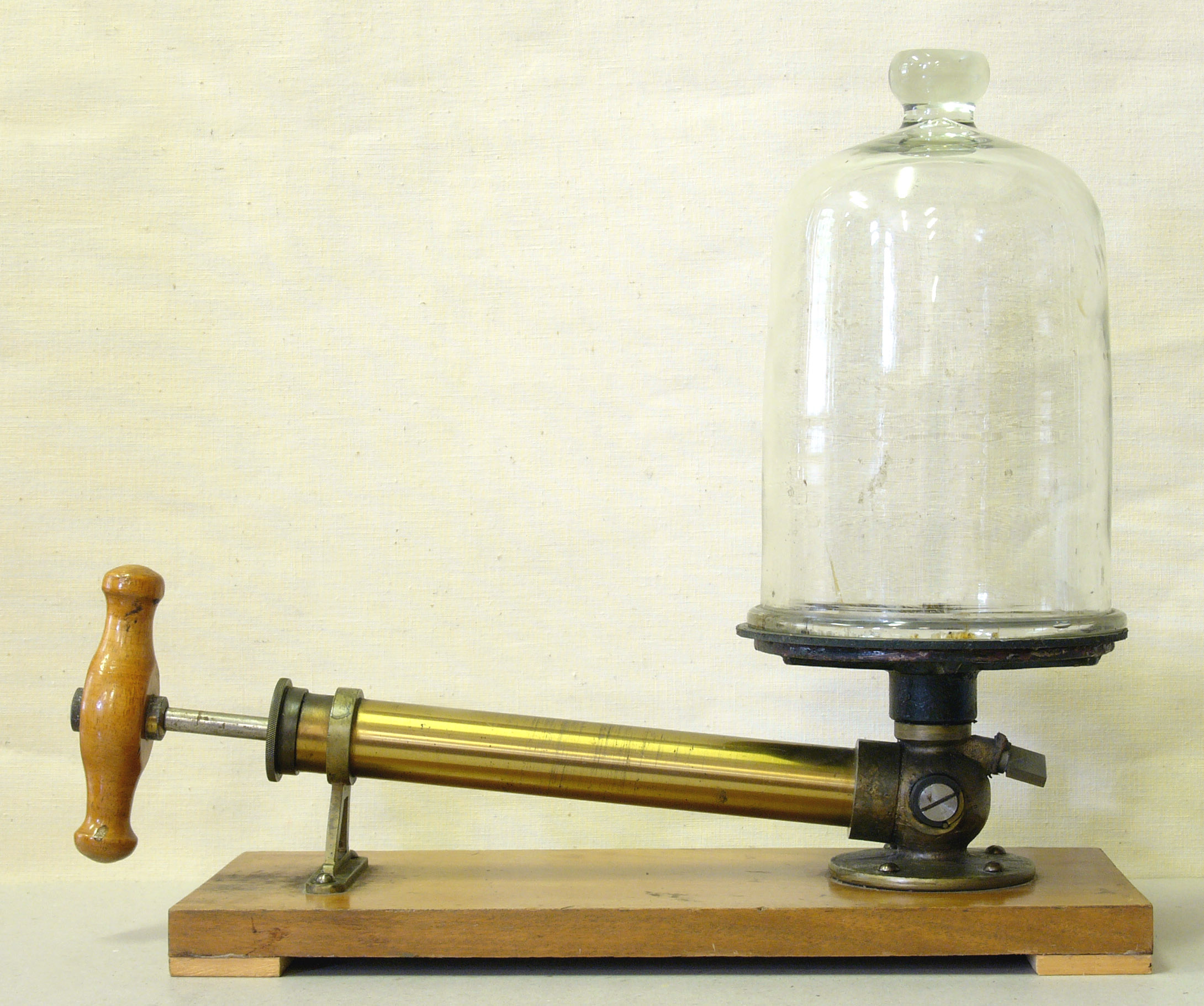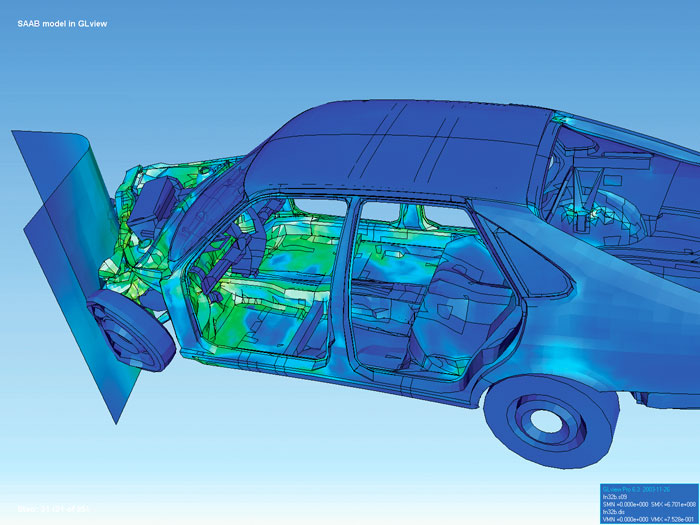|
Air Bearings
Air bearings (also known as aerostatic or aerodynamic bearings) are bearings that use a thin film of pressurized gas to provide a low friction load-bearing interface between surfaces. The two surfaces do not touch, thus avoiding the problems of friction, wear, particulates, and lubricant handling associated with conventional bearings, and air bearings offer distinct advantages in precision positioning, such as lacking backlash and static friction, as well as in high-speed applications. Spacecraft simulators now most often use air bearings, and 3-D printers are now used to make air-bearing–based attitude simulators for CubeSat satellites.Nemanja Jovanovic, et al. Design and Testing of a Low-Cost, Open Source, 3-D Printed Air-Bearing-Based Attitude Simulator for CubeSat Satellites. ''Journal of Small Satellites'' Vol. 8, No. 2, pp. 859–880 (2019). https://jossonline.com/letters/design-and-testing-of-a-low-cost-open-source-3-d-printed-air-bearing-based-attitude-simulator-for-cub ... [...More Info...] [...Related Items...] OR: [Wikipedia] [Google] [Baidu] |
Lubricant
A lubricant (sometimes shortened to lube) is a substance that helps to reduce friction between surfaces in mutual contact, which ultimately reduces the heat generated when the surfaces move. It may also have the function of transmitting forces, transporting foreign particles, or heating or cooling the surfaces. The property of reducing friction is known as lubricity. In addition to industrial applications, lubricants are used for many other purposes. Other uses include cooking (oils and fats in use in frying pans and baking to prevent food sticking), to reduce rusting and friction in machinery, through the use of motor oil and Grease (lubricant), grease, bioapplications on humans (e.g., lubricants for Replacement joint, artificial joints), ultrasound examination, medical examination, and sexual intercourse. It is mainly used to reduce friction and to contribute to a better, more efficient functioning of a mechanism. History Lubricants have been in some use for thousands of year ... [...More Info...] [...Related Items...] OR: [Wikipedia] [Google] [Baidu] |
Vacuum
A vacuum (: vacuums or vacua) is space devoid of matter. The word is derived from the Latin adjective (neuter ) meaning "vacant" or "void". An approximation to such vacuum is a region with a gaseous pressure much less than atmospheric pressure. Physicists often discuss ideal test results that would occur in a ''perfect'' vacuum, which they sometimes simply call "vacuum" or free space, and use the term partial vacuum to refer to an actual imperfect vacuum as one might have in a laboratory or in space. In engineering and applied physics on the other hand, vacuum refers to any space in which the pressure is considerably lower than atmospheric pressure. The Latin term ''in vacuo'' is used to describe an object that is surrounded by a vacuum. The ''quality'' of a partial vacuum refers to how closely it approaches a perfect vacuum. Other things equal, lower gas pressure means higher-quality vacuum. For example, a typical vacuum cleaner produces enough suction to reduce air pressur ... [...More Info...] [...Related Items...] OR: [Wikipedia] [Google] [Baidu] |
Lubrication
Lubrication is the process or technique of using a lubricant to reduce friction and wear and tear in a contact between two surfaces. The study of lubrication is a discipline in the field of tribology. Lubrication mechanisms such as fluid-lubricated systems are designed so that the applied load is partially or completely carried by hydrodynamic or hydrostatic pressure, which reduces solid body interactions (and consequently friction and wear). Depending on the degree of surface separation, different lubrication regimes can be distinguished. Adequate lubrication allows smooth, continuous operation of machine elements, reduces the rate of wear, and prevents excessive stresses or seizures at bearings. By repelling water and other substances, it also reduces corrosion. When lubrication breaks down, components can rub destructively against each other, causing heat, local welding, destructive damage and failure. Lubrication mechanisms Fluid-lubricated systems As the load incre ... [...More Info...] [...Related Items...] OR: [Wikipedia] [Google] [Baidu] |
Machines
A machine is a physical system that uses power to apply forces and control movement to perform an action. The term is commonly applied to artificial devices, such as those employing engines or motors, but also to natural biological macromolecules, such as molecular machines. Machines can be driven by animals and people, by natural forces such as wind and water, and by chemical, thermal, or electrical power, and include a system of mechanisms that shape the actuator input to achieve a specific application of output forces and movement. They can also include computers and sensors that monitor performance and plan movement, often called mechanical systems. Renaissance natural philosophers identified six simple machines which were the elementary devices that put a load into motion, and calculated the ratio of output force to input force, known today as mechanical advantage. Modern machines are complex systems that consist of structural elements, mechanisms and control compo ... [...More Info...] [...Related Items...] OR: [Wikipedia] [Google] [Baidu] |
Lager Mit Kolbenaktor
Lager (; ) is a style of beer brewed and conditioned at low temperature. Lagers can be pale, amber, or dark. Pale lager is the most widely consumed and commercially available style of beer. The term "''lager''" comes from the German word for "storage", as the beer was stored before drinking, traditionally in the same cool caves in which it was fermented. As well as maturation in cold storage, most lagers are distinguished by the use of ''Saccharomyces pastorianus'', a "bottom-fermenting" yeast that ferments at relatively cold temperatures. Etymology Until the 19th century, the German word ''Lagerbier'' ( de) referred to all types of bottom-fermented, cool-conditioned beer in normal strengths. In Germany today, it mainly refers to beers from southern Germany, either "''Helles''" (pale) or "'' Dunkles''" (dark). Pilsner, a more heavily hopped pale lager, is most often known as "Pilsner", "Pilsener", or "Pils". Other lagers are ''Bock'', ''Märzen'', and ''Schwarzbier''. In ... [...More Info...] [...Related Items...] OR: [Wikipedia] [Google] [Baidu] |
Finite Element Method
Finite element method (FEM) is a popular method for numerically solving differential equations arising in engineering and mathematical modeling. Typical problem areas of interest include the traditional fields of structural analysis, heat transfer, fluid flow, mass transport, and electromagnetic potential. Computers are usually used to perform the calculations required. With high-speed supercomputers, better solutions can be achieved and are often required to solve the largest and most complex problems. FEM is a general numerical method for solving partial differential equations in two- or three-space variables (i.e., some boundary value problems). There are also studies about using FEM to solve high-dimensional problems. To solve a problem, FEM subdivides a large system into smaller, simpler parts called finite elements. This is achieved by a particular space discretization in the space dimensions, which is implemented by the construction of a mesh of the object: the numer ... [...More Info...] [...Related Items...] OR: [Wikipedia] [Google] [Baidu] |
Finite Difference Method
In numerical analysis, finite-difference methods (FDM) are a class of numerical techniques for solving differential equations by approximating Derivative, derivatives with Finite difference approximation, finite differences. Both the spatial domain and time domain (if applicable) are Discretization, discretized, or broken into a finite number of intervals, and the values of the solution at the end points of the intervals are approximated by solving algebraic equations containing finite differences and values from nearby points. Finite difference methods convert ordinary differential equations (ODE) or partial differential equations (PDE), which may be Nonlinear partial differential equation, nonlinear, into a system of linear equations that can be solved by matrix algebra techniques. Modern computers can perform these linear algebra computations efficiently, and this, along with their relative ease of implementation, has led to the widespread use of FDM in modern numerical analysi ... [...More Info...] [...Related Items...] OR: [Wikipedia] [Google] [Baidu] |
Reynolds Equation
In fluid mechanics (specifically lubrication theory), the Reynolds equation is a partial differential equation governing the pressure distribution of thin viscous fluid films. It was first derived by Osborne Reynolds in 1886. The classical Reynolds Equation can be used to describe the pressure distribution in nearly any type of fluid film bearing; a bearing type in which the bounding bodies are fully separated by a thin layer of liquid or gas. General usage The general Reynolds equation is: \frac\left(\frac\frac\right)+\frac\left(\frac \frac\right) = \frac \left(\frac\right)+\frac \left(\frac\right)+\rho\left(w_a-w_b\right) - \rho u_a\frac - \rho v_a \frac + h\frac Where: *p is fluid film pressure. *x and y are the bearing width and length coordinates. *z is fluid film thickness coordinate. *h is fluid film thickness. *\mu is fluid viscosity. *\rho is fluid density. *u, v, w are the bounding body velocities in x, y, z respectively. *a, b are subscripts denoting the top and bot ... [...More Info...] [...Related Items...] OR: [Wikipedia] [Google] [Baidu] |




